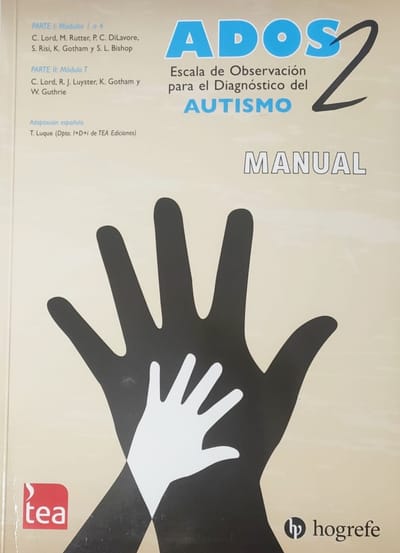My Psychopedagogical Space
In continuous learning.
lic. Daisy Fernandez
I introduce myself
My name is Margarita Fernández, I have a degree in Psychopedagogy, graduated from the UCA of Buenos Aires, I am also a Primary Education Teacher and a University Professor at UCASAL.
I have always been excited to learn and help others. This is how I studied and dedicated myself to teaching elementary school children for more than 18 years, seeing different ways of learning and that not everyone could do it in the expected times.
I will always remember the 6-year-old boy who challenged me to study more and more, to look for different strategies so that he can learn.
Studying educational psychology allowed me to understand how they learn, learn more about academic difficulties and how to help them. I dedicated myself to delving into the autism spectrum and became certified in assessment and treatment.
I think it is important to start sharing what I have learned up to now and disseminate from my humble space everything that concerns the psycho-pedagogical role, strategies and interventions accompanied by my experience in teaching and in collaboration with other great professionals.
I invite you to continue reading.
My name is Margarita Fernández, I have a degree in Psychopedagogy, graduated from the UCA of Buenos Aires, I am also a Primary Education Teacher and a University Professor at UCASAL.
I have always been excited to learn and help others. This is how I studied and dedicated myself to teaching elementary school children for more than 18 years, seeing different ways of learning and that not everyone could do it in the expected times.
I will always remember the 6-year-old boy who challenged me to study more and more, to look for different strategies so that he can learn.
Studying educational psychology allowed me to understand how they learn, learn more about academic difficulties and how to help them. I dedicated myself to delving into the autism spectrum and became certified in assessment and treatment.
I think it is important to start sharing what I have learned up to now and disseminate from my humble space everything that concerns the psycho-pedagogical role, strategies and interventions accompanied by my experience in teaching and in collaboration with other great professionals.
I invite you to continue reading.
Psychopedagogy

¿Qué es la Psicopedagogía?
Se ocupa de las características del aprendizaje humano: cómo aprende, cómo ese aprendizaje varía evolutivamente y está condicionado por diferentes factores; cómo y por qué se producen alteraciones del aprendizaje, cómo reconocerlas y tratarlas, qué hacer para prevenirlas y para promover procesos de aprendizaje que tengan sentido para los participantes.
¿Cuál es el rol del Psicopedagogo?
Cumple distintas funciones referidas al proceso de aprendizaje, puede elaborar, ejecutar y evaluar planos, proyectos, como así también llevar a cabo a cabo estudios e investigación.
El profesional puede realizar diagnósticos en los distintos aspectos de una persona en la que su proceso de aprendizaje se encuentra perturbado. Así mismo, evalúa e implementa estrategias de Rehabilitación, Estimulación, Orientación psicopedagógica y, en algunos casos, sugiere y realiza derivaciones a otras especialidades.
¿Quiénes pueden acudir a psicopedagogía?
Debido a que el aprendizaje es un proceso de toda la vida, pueden consultar niños, adolescentes, adultos y adultos mayores.
¿Cuándo se debe realizar una consulta con psicopedagogía?
En niños y jóvenes, cuando surjan dudas sobre el desempeño escolar, dificultades en la conducta, o cuando presenten pautas de alarmas en desarrollo evolutivo (ver sección de autismo y Neurodesarrollo).
En adultos y adultos mayores cuando los desafíos afectan la atención, la memoria, los olvidos recurrentes, luego de un accidente cardiovascular que afectará las funciones cognitivas, para renovar los certificados de discapacidad, etc.
¿En qué otros ámbitos se desempeña un psicopedagogo?
Educación
Salud
Clínica
Laboral
Forense
Comunitaria
La psicopedagogía es un campo. que está en continuo crecimiento por lo que cada vez más el quehacer del profesional abarca numerosas demandas.
Se ocupa de las características del aprendizaje humano: cómo aprende, cómo ese aprendizaje varía evolutivamente y está condicionado por diferentes factores; cómo y por qué se producen alteraciones del aprendizaje, cómo reconocerlas y tratarlas, qué hacer para prevenirlas y para promover procesos de aprendizaje que tengan sentido para los participantes.
¿Cuál es el rol del Psicopedagogo?
Cumple distintas funciones referidas al proceso de aprendizaje, puede elaborar, ejecutar y evaluar planos, proyectos, como así también llevar a cabo a cabo estudios e investigación.
El profesional puede realizar diagnósticos en los distintos aspectos de una persona en la que su proceso de aprendizaje se encuentra perturbado. Así mismo, evalúa e implementa estrategias de Rehabilitación, Estimulación, Orientación psicopedagógica y, en algunos casos, sugiere y realiza derivaciones a otras especialidades.
¿Quiénes pueden acudir a psicopedagogía?
Debido a que el aprendizaje es un proceso de toda la vida, pueden consultar niños, adolescentes, adultos y adultos mayores.
¿Cuándo se debe realizar una consulta con psicopedagogía?
En niños y jóvenes, cuando surjan dudas sobre el desempeño escolar, dificultades en la conducta, o cuando presenten pautas de alarmas en desarrollo evolutivo (ver sección de autismo y Neurodesarrollo).
En adultos y adultos mayores cuando los desafíos afectan la atención, la memoria, los olvidos recurrentes, luego de un accidente cardiovascular que afectará las funciones cognitivas, para renovar los certificados de discapacidad, etc.
¿En qué otros ámbitos se desempeña un psicopedagogo?
Educación
Salud
Clínica
Laboral
Forense
Comunitaria
La psicopedagogía es un campo. que está en continuo crecimiento por lo que cada vez más el quehacer del profesional abarca numerosas demandas.
Diagnosis and treatment



Si bien es cierto que, tanto en la evaluación, el diagnóstico y el tratamiento pueden tener distintos enfoques teóricos, cada terapeuta decide su orientación según su formación profesional, aún así, cada paciente requiere de una intervención y un abordaje particular de acuerdo a su necesidad.
Diagnóstico Psicopedagógico
El diagnóstico psicopedagógico es un proceso por el cual intentamos comprender la relación existente entre el paciente con el aprendizaje.
La finalidad del diagnóstico es comprender y detectar, no solo los desafíos que se presentan en el proceso de aprendizaje, sino también las fortalezas que posee la persona. Todo diagnóstico se correlaciona con la historia clínica del paciente y los estudios que solicitan el médico tratante.
Posteriormente, se planifica un tratamiento que se adecúe a las necesidades.
Tratamiento Psicopedagógico
En esta instancia, se busca potenciar, estimular o rehabilitar aquellas áreas que se encuentran debilitadas mediante objetivos específicos.
En general, los pacientes que presentan desafíos en el aprendizaje y que acuden a la consulta en edad temprana, tienen mayor oportunidad de que, mediante un tratamiento adecuado, mejoren su calidad de vida.
Sin embargo, si hay dudas en cuanto al desempeño en el aprendizaje en cualquier momento de nuestra vida, es necesario acudir a un profesional para que nos brinde una orientación.
En los pacientes adultos mayores, lo que se busca es mantener y conservar por más tiempo las funciones cognitivas que, debido a la edad, tienen a disminuir como proceso normal en el ciclo de la vida.
Diagnóstico Psicopedagógico
El diagnóstico psicopedagógico es un proceso por el cual intentamos comprender la relación existente entre el paciente con el aprendizaje.
La finalidad del diagnóstico es comprender y detectar, no solo los desafíos que se presentan en el proceso de aprendizaje, sino también las fortalezas que posee la persona. Todo diagnóstico se correlaciona con la historia clínica del paciente y los estudios que solicitan el médico tratante.
Posteriormente, se planifica un tratamiento que se adecúe a las necesidades.
Tratamiento Psicopedagógico
En esta instancia, se busca potenciar, estimular o rehabilitar aquellas áreas que se encuentran debilitadas mediante objetivos específicos.
En general, los pacientes que presentan desafíos en el aprendizaje y que acuden a la consulta en edad temprana, tienen mayor oportunidad de que, mediante un tratamiento adecuado, mejoren su calidad de vida.
Sin embargo, si hay dudas en cuanto al desempeño en el aprendizaje en cualquier momento de nuestra vida, es necesario acudir a un profesional para que nos brinde una orientación.
En los pacientes adultos mayores, lo que se busca es mantener y conservar por más tiempo las funciones cognitivas que, debido a la edad, tienen a disminuir como proceso normal en el ciclo de la vida.
Evaluación, Rehabilitación y Estimulación Neurocognitiva



Pacientes
Niños, adolescentes, adultos y adultos mayores
Evaluación Neurocognitiva
Es un proceso que permite indagar ampliamente las funciones cognitivas, conductuales y emocionales del paciente. Este tipo de evaluaciones se realiza a la población infantil y adolescente estableciendo un perfil que identifique factores de riesgo en el desarrollo y en adultos o adultos mayores permite examinar la presencia o no de alteraciones en el funcionamiento cognoscitivo.
Los estudios científicos demostraron que hay mayor neuroplasticidad en edades tempranas y que disminuye con los años, por lo que es preciso que se realice una pronta intervención para mejorar la calidad de vida ya sea estimulando o rehabilitando las áreas debilitadas según sea el caso.
Estimulación cognitiva
En la estimulación cognitiva se busca mantener y potenciar las funciones preservadas o levemente descendidas aplicando técnicas y estrategias que optimizan la eficacia del funcionamiento de las distintas capacidades y funciones cognitivas (percepción, atención, pensamiento, abstracción, memoria, lenguaje, procesos de orientación). y praxias). Se realiza mediante una serie de situaciones y actividades concretas que se estructuran en lo que se denomina “programas de entrenamiento cognitivo” (Villalba y Espert, 2014)
Rehabilitación neurocognitiva
En la rehabilitación cognitiva se intenta mejorar los déficits cognitivos, conductuales y emocionales derivados del daño cerebral. Si bien se aplican procedimientos, técnicas y ciertos niveles de apoyo el objetivo final es que la persona con déficits cognitivos pueda retornar de manera segura, productiva e independiente a sus actividades cotidianas (Ponsford, et al., 1995; Sohlberg y Mateer, 2001) .
Niños, adolescentes, adultos y adultos mayores
Evaluación Neurocognitiva
Es un proceso que permite indagar ampliamente las funciones cognitivas, conductuales y emocionales del paciente. Este tipo de evaluaciones se realiza a la población infantil y adolescente estableciendo un perfil que identifique factores de riesgo en el desarrollo y en adultos o adultos mayores permite examinar la presencia o no de alteraciones en el funcionamiento cognoscitivo.
Los estudios científicos demostraron que hay mayor neuroplasticidad en edades tempranas y que disminuye con los años, por lo que es preciso que se realice una pronta intervención para mejorar la calidad de vida ya sea estimulando o rehabilitando las áreas debilitadas según sea el caso.
Estimulación cognitiva
En la estimulación cognitiva se busca mantener y potenciar las funciones preservadas o levemente descendidas aplicando técnicas y estrategias que optimizan la eficacia del funcionamiento de las distintas capacidades y funciones cognitivas (percepción, atención, pensamiento, abstracción, memoria, lenguaje, procesos de orientación). y praxias). Se realiza mediante una serie de situaciones y actividades concretas que se estructuran en lo que se denomina “programas de entrenamiento cognitivo” (Villalba y Espert, 2014)
Rehabilitación neurocognitiva
En la rehabilitación cognitiva se intenta mejorar los déficits cognitivos, conductuales y emocionales derivados del daño cerebral. Si bien se aplican procedimientos, técnicas y ciertos niveles de apoyo el objetivo final es que la persona con déficits cognitivos pueda retornar de manera segura, productiva e independiente a sus actividades cotidianas (Ponsford, et al., 1995; Sohlberg y Mateer, 2001) .
Autism



What is Autism?
alarm signals

There are milestones that are expected in the typical development of a child, in certain cases these are not visualized.
Caregivers, whether parents or relatives, should take into account the following alarm guidelines:
Absence of babbling
From 2 months do not make eye contact or reject the look.
From 6 months does not smile or express joy.
After 8 months, show no interest in others.
At 9 months there is no exchange of sounds, facial gestures, or smiles.
At 10 months he still does not respond to his name or to the call for attention.
Around 12 months there is no exchange of gestures such as pointing to ask for something.
He seems to be more interested in objects than people.
That at 16 months still does not emit any words.
At 24 months there are no meaningful 2-word sentences.
There is a loss of language, babbling, or social skills at any age.
If you observe any of the mentioned symptoms, you should request an evaluation from a professional who is specialized in the area, who will determine the pertinent evaluation and subsequent therapeutic intervention.
The sooner the consultation is carried out, the greater the probability of treating and intervening in the difficulties to improve the quality of life and its development in daily life.
Caregivers, whether parents or relatives, should take into account the following alarm guidelines:
Absence of babbling
From 2 months do not make eye contact or reject the look.
From 6 months does not smile or express joy.
After 8 months, show no interest in others.
At 9 months there is no exchange of sounds, facial gestures, or smiles.
At 10 months he still does not respond to his name or to the call for attention.
Around 12 months there is no exchange of gestures such as pointing to ask for something.
He seems to be more interested in objects than people.
That at 16 months still does not emit any words.
At 24 months there are no meaningful 2-word sentences.
There is a loss of language, babbling, or social skills at any age.
If you observe any of the mentioned symptoms, you should request an evaluation from a professional who is specialized in the area, who will determine the pertinent evaluation and subsequent therapeutic intervention.
The sooner the consultation is carried out, the greater the probability of treating and intervening in the difficulties to improve the quality of life and its development in daily life.
research in autism

The research tools are the first interventions in the psychopedagogical evaluation when there are warning signs and indicators of atypical development, if the suspicion of autism is confirmed it is necessary to carry out a more specific evaluation with the ADOS-2, ADI-R and other evaluations. that complement it.
The investigations used vary according to age such as:
Q-CHAT from 18 to 48 months
M-CHAT-R from 16 to 30 months
CSBS-DP from 6 to 24 months
These investigations must be administered by professionals trained in neurodevelopment and are complemented by other types of medical studies that the pediatrician, neurologist, etc., can request.
ADOS 2 and ADI-R
The ADOS-2 is the Autism Diagnosis Observation Scale - 2, it consists of a standardized and semi-structured assessment of communication, social interaction, and play or imaginative use of materials for people suspected of having a spectrum disorder. autistic.
The ADI-R is a clinical interview that allows an in-depth evaluation of subjects with suspected autism or an Autism Spectrum Disorder (ASD). It focuses on behaviors that rarely occur in unaffected people.


courses
Training



This space is intended for professionals who are interested in training in education, learning difficulties, individual projects and leadership in the workplace.
You will be able to know all the synchronous and asynchronous courses available
You will be able to know all the synchronous and asynchronous courses available
Resilience and Well-being


Emotions and emotional resilience will make it possible to achieve greater well-being in your life.
Knowing ourselves allows us to identify our strengths and our weakest points.
Frequent questions
schedule schedule
Contact
- Leguizamón 762, Salta, Argentina
 +54-3876378637 - Leave a message on WhatsApp
+54-3876378637 - Leave a message on WhatsApp- +54-3874312916 - Leguizamón Clinics
- perezfernandez.psp@gmail.com
- Check available times


